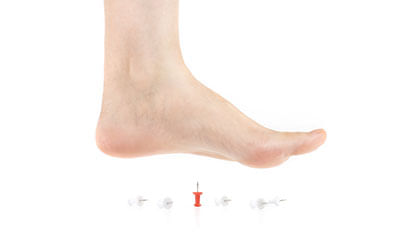Get the App
For Doctors
Login/Sign-up
Health Feed
Find Doctors
Health Packages
AllQ&AsTipsQuizzes
Minor Wounds Questions
Asked for female, 21 years old from Dehradun
Share
Bookmark
Report
Asked for female, 39 years old from Delhi
Share
Bookmark
Report
I am sorry to hear about your concern but will be happy to assist you.
Most boils are caused by staphylococcus aureus, a type of bacterium commonly found on the skin and inside the nose. A bump forms as pus collects under the skin. Boils sometimes develop at sites where the skin has been broken by a small injury or an insect bite, which gives the bacteria easy entry.
Let's connect over a call so that we can discuss your concern in details and make a suitable treatment plan for you.
Most boils are caused by staphylococcus aureus, a type of bacterium commonly found on the skin and inside the nose. A bump forms as pus collects under the skin. Boils sometimes develop at sites where the skin has been broken by a small injury or an insect bite, which gives the bacteria easy entry.
Let's connect over a call so that we can discuss your concern in details and make a suitable treatment plan for you.
5 people found this helpful
Asked for female, 22 years old from Phagwara
Share
Bookmark
Report
I am sorry to hear about your concern but will be happy to assist you.
You may also notice minor bleeding and bruising or redness around the piercing. These are normal and will go away as the cartilage piercing heals.
Let's connect over a call so that we can discuss your concern in details and make a suitable treatment plan for you.
You may also notice minor bleeding and bruising or redness around the piercing. These are normal and will go away as the cartilage piercing heals.
Let's connect over a call so that we can discuss your concern in details and make a suitable treatment plan for you.
3 people found this helpful
Asked for male, 17 years old from Trichy
Share
Bookmark
Report
Asked for male, 28 years old from Noida
Share
Bookmark
Report
Asked for male, 51 years old from Faridabad
Share
Bookmark
Report
Health Query
Share
Bookmark
Report
I am sorry to hear about your concern but will be happy to assist you.
Eventually, the blood clot hardens into a crusty protective layer known as a scab. As the damaged tissue regenerates, it pushes out the scab, replacing it with new skin. Typically, a scab is dark red or brown. As the scab ages, it becomes darker and may even turn black.
Let's connect over a call so that we can discuss your concern in details and make a suitable treatment plan for you.
Eventually, the blood clot hardens into a crusty protective layer known as a scab. As the damaged tissue regenerates, it pushes out the scab, replacing it with new skin. Typically, a scab is dark red or brown. As the scab ages, it becomes darker and may even turn black.
Let's connect over a call so that we can discuss your concern in details and make a suitable treatment plan for you.
30 people found this helpful
Health Query
Share
Bookmark
Report
I am sorry to hear about your concern but will be happy to assist you.
Eventually, the blood clot hardens into a crusty protective layer known as a scab. As the damaged tissue regenerates, it pushes out the scab, replacing it with new skin. Typically, a scab is dark red or brown. As the scab ages, it becomes darker and may even turn black.
Let's connect over a call so that we can discuss your concern in details and make a suitable treatment plan for you.
Eventually, the blood clot hardens into a crusty protective layer known as a scab. As the damaged tissue regenerates, it pushes out the scab, replacing it with new skin. Typically, a scab is dark red or brown. As the scab ages, it becomes darker and may even turn black.
Let's connect over a call so that we can discuss your concern in details and make a suitable treatment plan for you.
33 people found this helpful
Health Query
Share
Bookmark
Report
Asked for female, 25 years old from Chandigarh
Share
Bookmark
Report
I am sorry to hear about your concern but will be happy to assist you
after the cast is removed, it's normal to be stiff for 1 to 2 months. For some patients—such as those who are older, have osteoarthritis, or were victims of a high energy break such as from a car accident— this stiffness may last up to 2 years.
Let's connect over a call so that we can discuss your concern in details and make a suitable treatment plan for you.
after the cast is removed, it's normal to be stiff for 1 to 2 months. For some patients—such as those who are older, have osteoarthritis, or were victims of a high energy break such as from a car accident— this stiffness may last up to 2 years.
Let's connect over a call so that we can discuss your concern in details and make a suitable treatment plan for you.
Book appointment with top doctors for Minor Wounds treatment
View fees, clinic timings and reviews
Ask a free question
Get FREE multiple opinions from Doctors
posted anonymously






